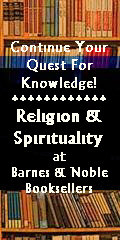
May You Be Blessed by the God of Your Heart |
The Geography of Eastern OrthodoxyThe Essentials of the FaithFounded: Orthodox Christianity arose as part of the Christianity observed throughout the Roman Empire. Gradually, the Church of Rome began to assume preëminence over the rest of Christianity, but not necessarily with the acknowledgment or coöperation of the eastern churches. Eventually, doctrine differences coupled with questions of papal authority led to the "Great Schism" of 1054, when Rome excommunicated the Patriarch of Constantinople, Michael Cerularios. Thus, the question of when Orthodox Christianity was founded depends on who one asks. An Orthodox Christian will tell you 33 AD, but a Roman Catholic will say 1054 AD. Adherents: Although Orthodox Christianity has a heavy ethnic component, it is essentially a universalizing faith encompassing people of all races and nationalities, the world over. The Church is also known as "Eastern Orthodoxy" because the most well known of the Orthodox are from the eastern regions of Europe and Asia, as in Russia, Greece, and the Coptics of Egypt. However, there are little known Orthodox Churches is such diverse places as Alaska, China, and Uganda. Although they often vary in language, liturgy, and ethnic character, each Orthodox Church is relatively similar to others. Distribution:The distribution listed for Orthodox Christians is given as follows from Markham, pp. 356-357:
Symbols:
Major Divisions: Divisions are not to be found along doctrinal lines, as is so often found in the Protestant churches. Rather, they are to be found in national, ethnic, and linguistic characteristics. Relations between the various churches are usually harmonious. However, there was a schism within the Orthodox Church between the Chalcedonian churches such as the Russian and Greek Orthodox, and the Non-Chalcedonian, known as the Oriental Orthodox churches. The split came about because the Council of Chalcedon stated that Christ must be confessed as having two natures, united as one. But the Oriental Orthodox closely followed the teachings of Saint Cyril of Alexandria who did not distinguish between the two natures of Christ. The Eastern Orthodox Church today comprises various jurisdictions. There are 15 Orthodox Patriarchetes, four of which are the ancient Patriarchetes of Constantinople, Alexandria, Antioch, and Jerusalem. The heads of these churches are called Patriarchs. Other self-governing churches include Russia, Serbia, Romania, Bulgaria, Cyprus, Poland, Albania, Georgia, Czechoslovakia, and America. The heads of these churches are known as Patriarchs, Catholic-Patriarchs, and Archbishops. Major Holy Days: Orthodox Christians celebrate the same holidays that most other Christians celebrate, but they use a different calendar. Thus, the Orthodox celebrations of Easter and Christmas are usually on different days than those of western Christians. Different saints may be honored on differing days than those observed in the West.
The Details about Eastern Orthodoxy
Orthodox worship consists of the Divine Liturgy, Divine Office, and Occasional Offices. The Divine Liturgy is the celebration of the Eucharist, which is the remembrance of Christ and His victories. The Divine Office consists of prayers and readings called matins and vespers. Occasional Offices are services for baptism, marriage, and funerals. All of these services are sung or chanted in the language of the congregation. The Sacraments of the Orthodox Church are basically similar to the Roman Catholic Sacraments, but they do vary at times. For example, confession is less common and the liturgy is usually not celebrated daily. An Orthodox priest may be married.
The Geography of Eastern Orthodoxy
The Orthodox Churches also have monasteries and missions. As Alaska was first being explored by Russia, the Russian Orthodox Church sent missionaries to evangelize the native people and minister to the settlers. As a result, there are small Orthodox churches scattered throughout Alaska and the Pacific northwest today. Years of missionary work has resulted in growing numbers of Orthodox in such places as Uganda. Even China and Japan have had their own Orthodox adherents.
ReferencesMarkham, Ian S., (Editor), A World Religions Reader. Cambridge, MA: Blackwell Publishers, 1996. Stroyen, V. Rev. W. Basil, The Orthodox Herald. Hunlock Creek, PA. This is a monthly newsletter published over 40 years by a priest of the Orthodox Church of America. Father Stroyen is of Carpatho-Rusyn descent and regularly leads trips to eastern Europe. You may subscribe for $7.00 per year by writing to PO Box 9, Hunlock Creek, PA 18621. Ware, Timothy, The Orthodox Church. New York: Viking Penguin Inc., 1984, pp. 269, 270. This book, written by an english convert to the Orthodox Church and an Orthodox bishop, is probably the definitive introduction to Orthodoxy for the layman. Ware, Father Kallistos, The Orthodox Way. Crestwood, NY: St. Vladimir's Seminary Press, 1986. This book was written by Timothy Ware, now Father Ware, deals with Orthodox theology and spirituality.
Links for More Information
Return to The Geography of Christianity |

 Various symbols may represent each Orthodox Church, but there does not seem
to be a single symbol representing the whole of Orthodoxy. The symbol used
on this website is the cross used by the Russian Orthodox Church. The slanted
bar on the lower part of the cross represents the plank to which the feet of
Jesus were nailed.
Various symbols may represent each Orthodox Church, but there does not seem
to be a single symbol representing the whole of Orthodoxy. The symbol used
on this website is the cross used by the Russian Orthodox Church. The slanted
bar on the lower part of the cross represents the plank to which the feet of
Jesus were nailed.